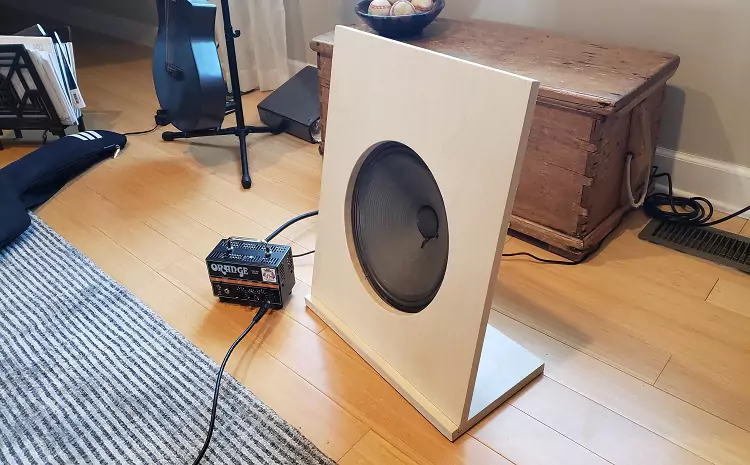When it comes to optimizing sound quality, baffling plays a crucial role in speaker design. Understanding what materials to use for speaker baffles can significantly enhance your listening experience. This article will explore effective materials for baffling and how they improve sound quality.
Key Takeaways
- Baffles help reduce unwanted noise and improve sound clarity in speakers.
- Common materials for speaker baffles include foam, fiberglass, and acoustic panels.
- Proper baffling can enhance bass response and minimize sound distortion.
- Consider the specific needs of your speakers when choosing baffle materials.
What Is a Speaker Baffle?
A speaker baffle is a barrier that separates the front and rear sound waves produced by a speaker driver. This separation helps prevent sound interference and enhances sound quality. When sound waves interact, they can create undesirable effects, such as phase cancellation and distortion. A well-designed baffle minimizes these issues.
Why Use a Baffle in Speakers?
Using a baffle in a speaker serves several purposes:
- Improves Sound Quality: Reduces distortion and enhances clarity.
- Enhances Bass Response: Helps manage low-frequency sounds for a fuller sound.
- Prevents Sound Leakage: Keeps sound waves directed where they belong, improving overall performance.
| Purpose | Benefit |
|---|---|
| Improves Sound Quality | Reduces distortion |
| Enhances Bass Response | Creates a fuller sound |
| Prevents Sound Leakage | Directs sound waves effectively |
Materials Used for Speaker Baffling
Choosing the right material for baffling is essential for achieving the best sound quality. Here are some effective materials you can use:
Acoustic Foam
Acoustic foam is a popular choice for speaker baffles. It absorbs sound waves, minimizing reflections and echoes. This material is lightweight and easy to work with, making it a convenient option.
Fiberglass
Fiberglass is another excellent baffling material. It has high-density properties, effectively reducing sound transmission. Fiberglass is ideal for controlling low-frequency sounds, making it suitable for subwoofers and large speakers.
Mass Loaded Vinyl (MLV)
Mass Loaded Vinyl is a dense material often used in soundproofing. It adds weight to the speaker enclosure, reducing vibrations and enhancing sound quality. MLV is especially useful for high-performance speakers that require better sound isolation.
Acoustic Panels
Acoustic panels can be used inside speaker enclosures to improve sound absorption. They help control reflections and enhance clarity. These panels are commonly used in professional audio setups.
Polyfill
Polyfill, or polyester fiberfill, is a synthetic material often used in speaker enclosures. It helps to reduce sound waves’ bounce within the cabinet, improving overall sound quality. Polyfill is a cost-effective solution for DIY projects.
| Material | Benefits | Best Used In |
|---|---|---|
| Acoustic Foam | Absorbs sound, reduces reflections | General speakers |
| Fiberglass | High-density, controls low frequencies | Subwoofers, larger speakers |
| Mass Loaded Vinyl (MLV) | Reduces vibrations, enhances sound quality | High-performance speakers |
| Acoustic Panels | Improves sound absorption | Professional audio setups |
| Polyfill | Cost-effective, reduces internal bounce | DIY projects, small speakers |
How to Baffle a Speaker?
Choose the Right Material
Select a material based on your speaker’s needs. For general use, acoustic foam or polyfill may be sufficient. For subwoofers, consider fiberglass or MLV.
Measure and Cut
Carefully measure the interior of your speaker enclosure. Cut the baffling material to fit snugly within the enclosure. Ensure there are no gaps for optimal sound quality.
Install the Material
Place the baffling material inside the enclosure. If you’re using acoustic foam or acoustic panels, you can use adhesive to secure them in place. For fiberglass or MLV, make sure it fits tightly without shifting.
Reassemble the Speaker
Once the baffle material is in place, reassemble the speaker. Ensure all screws and fittings are tight to prevent any rattling during operation.
Test the Sound Quality
After reassembly, test the speaker. Listen for any distortion or unwanted sounds. If needed, you may want to adjust the baffling material for better performance.
| Step | Action |
|---|---|
| Choose the Right Material | Decide based on speaker type |
| Measure and Cut | Get precise measurements |
| Install the Material | Secure using adhesive or tight fitting |
| Reassemble the Speaker | Ensure everything is tightly fitted |
| Test the Sound Quality | Listen for any distortion or unwanted sounds |
Common Mistakes to Avoid
- Using Too Much Material: Overstuffing a speaker can reduce sound quality. Use the right amount based on the design.
- Not Securing the Material: If the material moves around, it can create rattles and distort sound.
- Ignoring the Speaker’s Design: Every speaker design has specific baffling needs. Follow manufacturer guidelines for best results.
Conclusion
Understanding what materials to use for baffling inside your speaker can greatly improve sound quality. Whether you choose acoustic foam, fiberglass, or polyfill, the right material will help minimize distortion and enhance performance.
By properly baffling your speakers, you can enjoy clearer sound and better bass response. Remember to choose materials that fit your specific needs and follow the installation steps carefully for the best results.With the right approach, you’ll transform your speakers into a more powerful audio experience.









